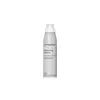What's inside
What's inside
 Benefits
Benefits

 Concerns
Concerns

 Ingredients Side-by-side
Ingredients Side-by-side

Water
Skin ConditioningButane
Vp/Methacrylamide/Vinyl Imidazole Copolymer
Isobutane
Polyalkylaminoester-1
Decyl Glucoside
CleansingPPG-2 Myristyl Ether Propionate
EmollientOleth-10
EmulsifyingOleth-5
EmulsifyingPanthenol
Skin ConditioningPhenoxyethanol
PreservativeParfum
MaskingXanthan Gum
EmulsifyingAcacia Senegal Gum
MaskingGlycerin
HumectantChlorphenesin
AntimicrobialEthylhexylglycerin
Skin ConditioningDecylene Glycol
Skin ConditioningLimonene
PerfumingHexyl Cinnamal
PerfumingLinalool
PerfumingCitronellol
PerfumingCitral
PerfumingMethyldihydrojasmonate
MaskingDipropylene Glycol
HumectantCitrus Aurantium Dulcis Peel Oil
MaskingCitrus Aurantium Bergamia Fruit Oil
MaskingLinalyl Acetate
MaskingPinene
MaskingAmyl Salicylate
PerfumingEthylene Brassylate
MaskingCitrus Limon Peel Oil
MaskingTetramethyl Acetyloctahydronaphthalenes
MaskingIonone
AstringentCyclamen Aldehyde
MaskingWater, Butane, Vp/Methacrylamide/Vinyl Imidazole Copolymer, Isobutane, Polyalkylaminoester-1, Decyl Glucoside, PPG-2 Myristyl Ether Propionate, Oleth-10, Oleth-5, Panthenol, Phenoxyethanol, Parfum, Xanthan Gum, Acacia Senegal Gum, Glycerin, Chlorphenesin, Ethylhexylglycerin, Decylene Glycol, Limonene, Hexyl Cinnamal, Linalool, Citronellol, Citral, Methyldihydrojasmonate, Dipropylene Glycol, Citrus Aurantium Dulcis Peel Oil, Citrus Aurantium Bergamia Fruit Oil, Linalyl Acetate, Pinene, Amyl Salicylate, Ethylene Brassylate, Citrus Limon Peel Oil, Tetramethyl Acetyloctahydronaphthalenes, Ionone, Cyclamen Aldehyde
Ingredients Explained
These ingredients are found in both products.
Ingredients higher up in an ingredient list are typically present in a larger amount.
We don't have a description for Isobutane yet.
Parfum is a catch-all term for an ingredient or more that is used to give a scent to products.
Also called "fragrance", this ingredient can be a blend of hundreds of chemicals or plant oils. This means every product with "fragrance" or "parfum" in the ingredients list is a different mixture.
For instance, Habanolide is a proprietary trade name for a specific aroma chemical. When used as a fragrance ingredient in cosmetics, most aroma chemicals fall under the broad labeling category of “FRAGRANCE” or “PARFUM” according to EU and US regulations.
The term 'parfum' or 'fragrance' is not regulated in many countries. In many cases, it is up to the brand to define this term.
For instance, many brands choose to label themselves as "fragrance-free" because they are not using synthetic fragrances. However, their products may still contain ingredients such as essential oils that are considered a fragrance by INCI standards.
One example is Calendula flower extract. Calendula is an essential oil that still imparts a scent or 'fragrance'.
Depending on the blend, the ingredients in the mixture can cause allergies and sensitivities on the skin. Some ingredients that are known EU allergens include linalool and citronellol.
Parfum can also be used to mask or cover an unpleasant scent.
The bottom line is: not all fragrances/parfum/ingredients are created equally. If you are worried about fragrances, we recommend taking a closer look at an ingredient. And of course, we always recommend speaking with a professional.
Learn more about ParfumWater. It's the most common cosmetic ingredient of all. You'll usually see it at the top of ingredient lists, meaning that it makes up the largest part of the product.
So why is it so popular? Water most often acts as a solvent - this means that it helps dissolve other ingredients into the formulation.
You'll also recognize water as that liquid we all need to stay alive. If you see this, drink a glass of water. Stay hydrated!
Learn more about Water